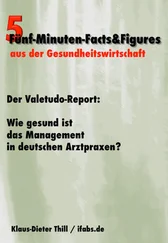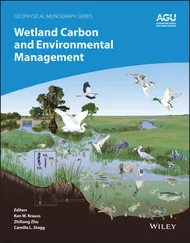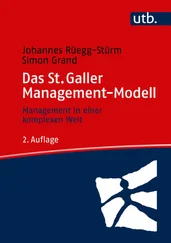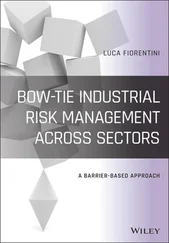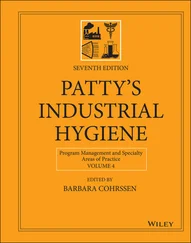6 True. General qualification criteria for environmental management system auditors include education and work experience. Auditors should have completed at least a secondary education or equivalent with five years appropriate working experience or a college degree with two years appropriate work experience.
7 False. Companies can demonstrate compliance through either a self‐declaration or third‐party registration.
8 True. Under ISO 14000 certification, a single certificate can cover a specific site of a company, a specific facility, several facilities, or portions of sites or facilities. For example, one ISO 14001 certificate might encompass four different sites of a company in four different states and a portion of a site in a fifth state if these sites are audited at the same time against the same standard.
A third‐party audit is conducted in a pulp and paper mill facility. You are one of the auditors assigned to verify written procedures that are in place and thus to verify the effectiveness of the facility's environmental management system. One of the personnel you are interviewing is the facility's environmental manager. You asked the manager to verify that she has access to all of the regulations and laws that are applicable to the plant. The manager signals you to follow her to a library in the next room. She stops in the library and proudly points toward the four bookcases occupied with texts on environmental laws.
You are impressed but you continue to ask the environmental manager another question. “Can you show me the procedure you use to evaluate regulatory compliance within your facility?” The manager immediately responds by saying that she does not need a procedure for compliance evaluation because she is intimately familiar with what documentation needs to be reviewed when a compliance issue arises. Discuss the above situation with regard to conformance and nonconformance.
This is a major nonconformance because the facility lacks a procedure to evaluate its compliance with applicable regulations. The ISO 14001 standard, Section 4.2.2, states that “That organization shall establish and maintain a procedure to identify and have access to legal and other requirements to which the organization subscribes directly applicable to the environment aspects of its activities products or services.” Thus, the facility is in nonconformance with Section 4.2 and Clause 4.2.2.
The issuance of nonconformance does not mean that the facility cannot be certified. Since this is a major nonconformance, however, the facility must take corrective action and show that the procedure is in place and effective in order to come into conformance with ISO 14001 standards. Having all this in place, the facility may request that the registrar reconsider its certification.
2.16 Current Environmental Regulatory Development in the United States: From End‐of‐Pipe Laws and Regulations to Pollution Prevention
2.16.1 Introduction
It was 1970, a cornerstone year for the US modern environmental policy. The National Environmental Policy Act (NEPA) was enacted on 1 January 1970. NEPA was not based on specific legislation; instead, it referred in general manner to environmental and quality of life concerns. The Council for Environmental Quality (CEQ), established by NEPA, was one of the councils mandated to implement legislation. 22 April 1970 brought Earth Day, where thousands of demonstrators gathered all around the nation. NEPA and Earth Day were the beginning of a long, seemingly never ending debate over environmental issues.
The US Administration at that time became preoccupied with not only trying to pass more extensive environmental legislation but also implementing the laws. The White House Commission on Executive Reorganization proposed in the Reorganizational Plan of 1970 that a single, independent agency be established, separate from the CEQ. The plan was sent to Congress by President Nixon on 9 July 1970, and a new USEPA began operation on 2 December 1970. The EPA was officially born.
In many ways, the EPA is so broad. The EPA is charged to protect the nation’s air, water, and land. The EPA works with the states and local governments to develop and implement comprehensive environmental programs. The key Federal laws such as the Clean Air Act (CAA); the Clean Water Act (CWA); the Safe Drinking Water Act (SDWA); the Resource Conservation and Recovery Act (RCRA); Toxic Substance Control Act (TSCA); the Comprehensive Environmental Response, Compensation and Liability Act (CERCLA – SUPERFUND); the Occupational Safety and Health Act (OSHA); and the Pollution Prevention Act (PPA), all mandate involvement by 50 states and local governments in the detail of implementations.
USEPA decided to regulate greenhouse gases as air pollutants under the CAA. Three major development have occurred (USEPA 2011). First, in the Supreme Court case of Massachusetts v. EPA , the court ruled in a 5‐to‐4 decision that the EPA has the statutory authority to regulate CO 2and other greenhouse gases as air pollutants under the CAA (Cornell University 2007). Second, on 22 September 2009, the EPA administrator signed the Final Mandatory Reporting of Greenhouse Gases Rule. Under this rule large emission sources and suppliers are required to report greenhouse gas emissions (2009a; 2009b). The intention of the rule is to collect accurate data for future policy decision making on climate change mitigation. Third, in December 2009 the EPA made a finding that greenhouse gases endanger human health and welfare, in response to the (CO 2), methane (CH 4), nitrous oxide (N 2O), hydrofluorocarbons (HFCs), perfluorocarbons (PFCs), and sulfur hexafluoride (SF 6). This endangerment finding is a requisite to the EPA developing emission standards for greenhouse gases.

Figure 2.6 Cumulative growth in federal environmental laws and amendments in the United States.
Source: Adopted from Allen and Shonnard (2002) and Sullivan and Adams (1997).
There are approximately 20 major US federal statues, hundreds of states and local ordinances, thousands of federal and state regulations and even more federal and state court cases and administrative adjustments, etc. that deal with environmental issues. Taken together, they make up the field of environmental law, which has seen remarkable growth in the last 30 some years, as shown in Figure 2.6(Allen and Shonnard 2002).
All engineers, particularly in the branches of chemical, civil, environmental, mechanical, metallurgy, mining, and nuclear should be familiar with environmental laws and regulations because they affect the operations of many processes and professional responsibilities involved in their respective fields. Environmental regulations and the common law system of environmental law require actions by affected entities. For examples, the CAA (an environmental statute) requires facilities which emit pollutants from a stack (point source) into an air‐shed to apply for a Prevention of Significant Deterioration (PSD) permit; and the CWA requires facilities that discharge pollutants from a pipe or an outfall (point source) into navigable waters to apply for a National Pollutant Discharge Elimination System permit. In many companies, engineers are responsible for applying and obtaining these permits. The common law created by judicial decision also encourages engineers to act responsibly when permitting their professional duties because environmental laws and regulations do not cover every conceivable environmental wrong. Engineers need to be aware of potential legal liability resulting from violation of environmental laws and regulations to protect their companies and themselves from legal and administrative actions.
Читать дальше


